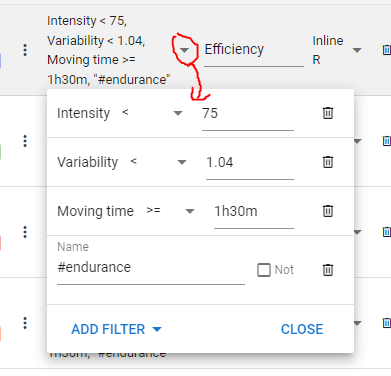I have been trying to learn about how to use the aerobic decoupling number to inform training - I get what it means physiologically and have read the references the intervals.icu points and have tried finding some info on youtube (from inigo san millan I think). The info basically says that it can give you an idea of how fit you are. I can’t really find any information about specific number ranges and how to interpret them though.
For example - I did a 2.5 hour gravel race with an -8% decoupling according to intervals.icu. Does it mean that my FTP is set too low? Was I too conservative either at the beginning or at the end of the race? Do I just have a really good aerobic base going on and need to shift to more anaerobic work?
On some shorter interval workouts I’ll have more positive decoupling - 5%, 8%, etc… Does that mean I need to do more intervals targeting that particular zone or energy system?
More succinctly - how much decoupling is too much (or too little)? How do you use this number to adjust intensity of workouts or advise rest days? Or is it useful for this at all?
Thanks for any insights!
Absolutely zero use in a race situation. The race is the race and it’s not a constant pace or effort throughout.
Pw:Hr decoupling is typically used on longer steady endurance efforts, be that Z1 in a 5 zone model, upper Z1, lower Z2 , top Z2 or whatever. The key word is steady.
Decoupling percentage won’t tell you how ‘fit’ you are… It will tell you how efficient you are at the given intensity. You’re looking for a decoupling percentage lower than 5%. That’s generally considered as efficient!
So if you go out and do a 4hr ride steady at 200 watts and your Pw:Hr is 3.19% then you can say with a good degree of certainty that you’re pretty efficient at that power…
It’s not much use during shorter intervals and I’d pay absolutely zero attention whatsoever to decoupling on anything under 10 minutes, maybe even 20 minutes. But like I said, it’s mostly used to determine efficiency over long steady spins.
One important point to remember is that HR can be affected by many different things. If you’re out on a long spin and get dehydrated you’re going to see a larger decoupling than you might have expected. Doesn’t necessarily mean you’re inefficient, just dehydrated
10 Likes
Similar, but related-Efficiency Factor. Is there a way to graph EF numbers over time for all endurance rides? e.g. Only pull numbers from rides with IF below a number or pull rides with “endurance” in the title?
Yep, I do this on the fitness page
Example here…

9 Likes
THANKS! that’s exactly what I needed.
1 Like
It’s primarily useful for steady state/long slow distance training rides, runs or rows. I only check it for sessions longer than 40 minutes.
If it’s greater than 5% then you might be going too hard to get the most from the session (your heart had to work increasingly hard to sustain the same power outout). It might also mean you got too hot,you are sick, you are over-trained, you didn’t hydrate or fuel optimally, you had coffee or other stimulant, or you started thinking about something stressful half way through (work, family, finance etc). So it’s useful for flagging that something was off about the session.
If it’s less than 3% then you might be going too easy or not long enough to get the most out of the session - your body didn’t really get stressed at all. This might also be your aim for recovery sessions as you don’t want to stress your body.
Many people find it hard to go slow, so it’s also another way to flag that you’re not going slow enough for zone 2/your all-day pace
2 Likes

